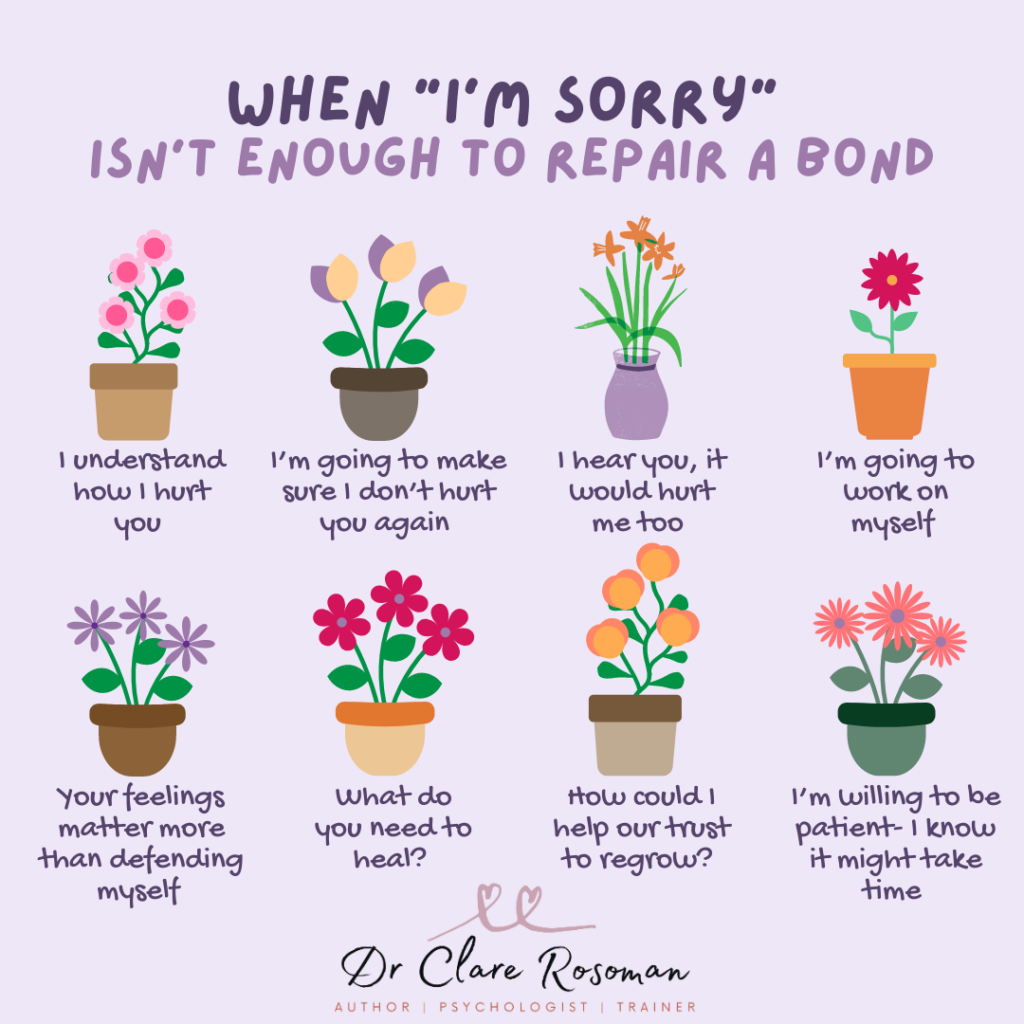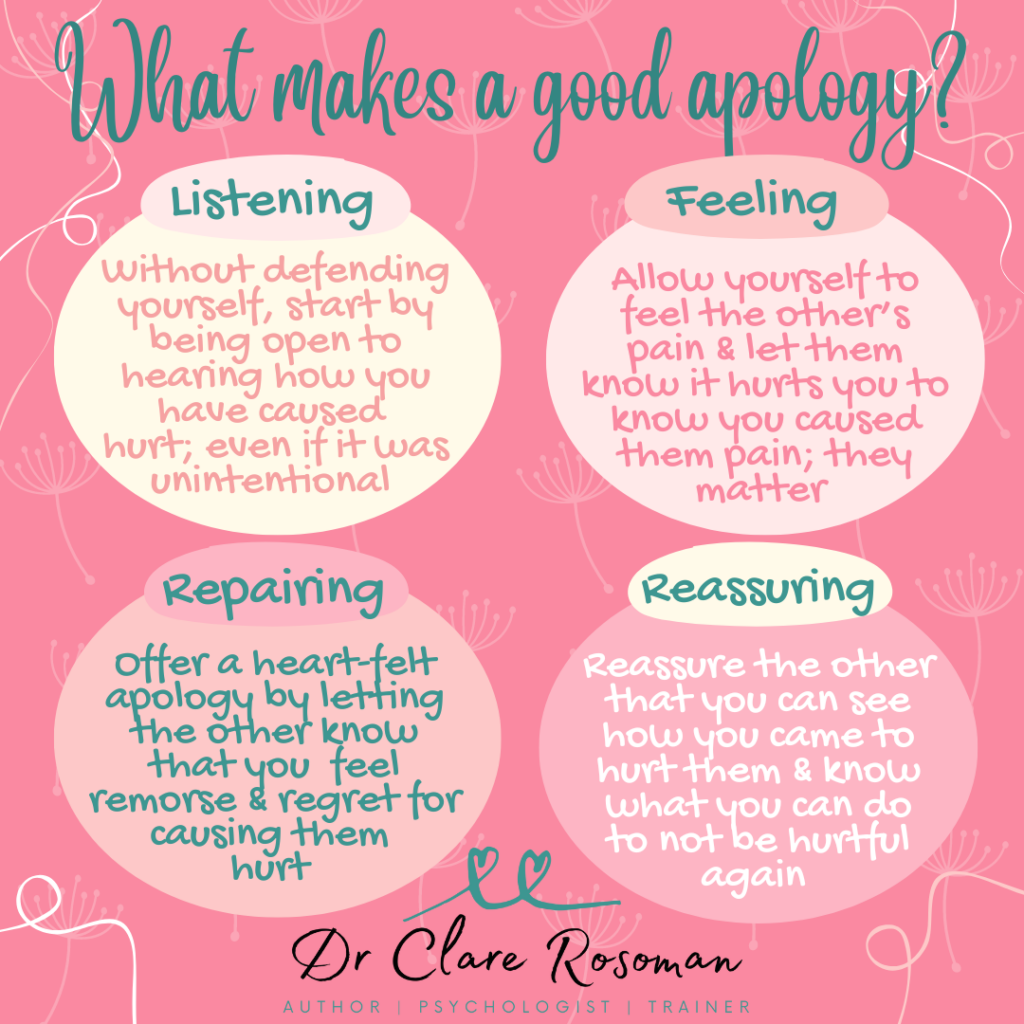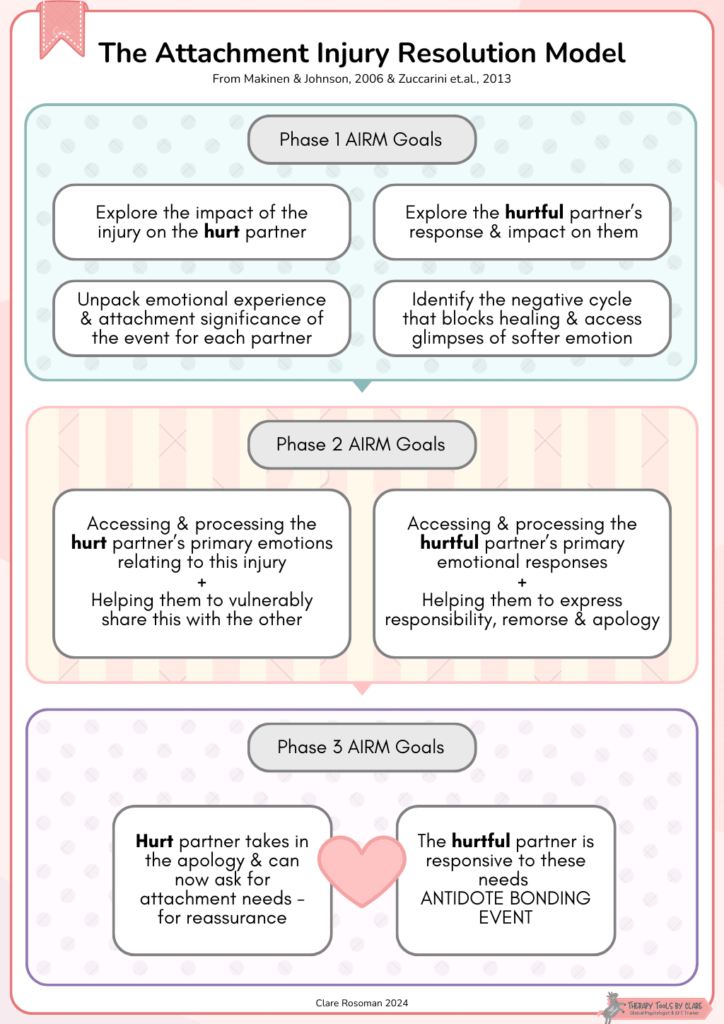When “I’m sorry” is not enough – what is the Attachment Injury Resolution Model (AIRM) in EFT?

In Emotionally Focused Therapy (EFT) we are convinced that simply saying “sorry” often isn’t enough to heal deep emotional wounds or attachment injuries within a relationship. True healing and repair require more comprehensive and emotionally engaged efforts.
The Attachment Injuries
An attachment injury is a key concept referring to deep emotional wounds caused by a partner’s actions that undermine the sense of safety and trust in a relationship. An attachment injury results from a partner’s actions or omissions perceived as betrayal, abandonment, lack of support, or failure to respond to emotional needs. Attachment injuries cause a loss of trust in the partner, leading to ongoing anxiety and insecurity in the relationship. Unresolved attachment injuries can lead to cyclical conflicts where the same emotional issues are repeatedly triggered and never fully resolved.
Here are some key reasons why just saying “I’m sorry” might not be enough, and what needs to happen instead:
Depth of Emotional Engagement
Authentic Expression of Emotions:
- Apologies need to come with a deep and genuine expression of the emotions involved. The injured partner needs to see and feel that the apologizing partner truly understands the impact of their actions.
- Example: Instead of just saying “I’m sorry,” the apologizing partner might say, “I feel deeply regretful and sad for the pain my actions have caused you. I understand that my behavior made you feel unloved and rejected.”
Here are some tips for apologizing partners:

If you’d like an A4 copy you can download it HERE.
Acknowledgment of Hurt:
- The apologizing partner must fully acknowledge the hurt they have caused, validating the injured partner’s feelings and experiences.
- Example: “I see how my actions hurt you and made you feel betrayed. I realize that this has deeply affected your trust in me.”
Actions Beyond Words
Taking Responsibility:
- A meaningful apology involves taking full responsibility for the actions without excuses or justifications.
- Example: “I take full responsibility for what I did. There is no excuse for my behavior.”
Making Amends:
- Apologies should be accompanied by concrete actions aimed at making amends and showing commitment to change.
- Example: “I want to show you through my actions that I am committed to changing. Let’s discuss what I can do to rebuild your trust.”
Building Trust and Reassurance
Consistency and Follow-Through:
- The injured partner needs to see consistent and ongoing efforts to change the harmful behavior. Trust is rebuilt over time through repeated positive actions.
- Example: Regularly checking in with the partner to ensure they feel heard and supported, and consistently demonstrating trustworthy behavior.
Re-establishing Safety:
- The apologizing partner needs to actively work on creating a safe emotional environment where the injured partner can express their feelings without fear of dismissal or retribution.
- Example: “I want to make sure you feel safe to share your feelings with me. Your emotions are important, and I am here to listen and support you.”
Remember what makes a good apology:

If you’d like an A4 copy you can download it HERE.
Professional Guidance
If you feel the injury is too big for you to work with as a couple on your own, consider therapeutic support. Working with an EFT therapist can provide a structured and supportive environment to navigate the complexities of attachment injuries. Therapists can guide couples through the process of genuine emotional engagement and healing using the Attachment Injury Resolution Model (AIRM).
The Attachment Injury Resolution Model (AIRM).
The model of repairing attachment injuries in EFT is based on several key steps designed to restore trust and closeness in the relationship. Here are the main elements of this model:
- Identifying and Naming the Injury: The therapist helps the partners identify specific moments that caused the attachment injury. It is crucial that each partner can express their emotions and feelings related to these moments.
- Emotional Engagement: Partners are encouraged to engage deeply on an emotional level, meaning they must openly and honestly express their feelings, fears, and needs. The therapist supports them in creating a safe space for such communication.
- Mutual Understanding: Partners work towards understanding each other’s perspectives, which includes empathetic listening and acknowledging the pain and suffering of the other. It is important that each partner feels their emotions are understood and accepted.
- Apologies and Repair: This process involves sincere apologies and acts of repair that can help rebuild trust. Apologies must be genuine and express understanding of the pain that was caused.
- Creating a New Narrative: Partners work together to create a new, positive narrative about their relationship, which includes overcoming difficulties and mutual commitment to rebuilding the bond.
- Consolidating Changes: The therapist helps the couple consolidate positive changes and new patterns of communication to ensure the durability of the rebuilt bond.
Benefits of the Model of Resolving Attachment Injuries
The model of repairing attachment injuries in EFT brings many benefits, including:
- Restoration of trust and closeness in the relationship.
- Increased empathy and mutual understanding.
- Better communication and the ability to resolve conflicts constructively.
- Strengthening of the emotional bond and a sense of security in the relationship.
The Attachment Injury Resolution Model diagram:

If you’d like an A4 copy you can download it HERE.
Creating a New Narrative
Co-creating New Stories:
- Partners need to collaboratively create a new narrative for their relationship that acknowledges past hurts but focuses on growth, healing, and the future.
- Example: “Let’s work together to create a new chapter in our relationship where we are more connected, understanding, and supportive of each other.”
Conclusion
In EFT, an effective apology is more than just words; it is a combination of deep emotional engagement, responsibility, consistent actions, and the rebuilding of trust. Therapists guide couples through this process to help them heal from attachment injuries and create a stronger, more resilient relationship. EFT, along with the model of repairing attachment injuries, is recognized as one of the most effective methods of couples therapy, helping to overcome difficult moments and rebuild strong, healthy relationships.
All graphics used in this post were created by Clare Rosoman, a certified EFT trainer from Australia. Clare once again allowed Barbara Sławik, a certified EFT supervisor, to translate them into the local language for the Polish community. We hope they are helpful 🤩 Clare is also the author of a book on repairing attachment trauma in close relationships, how to move beyond betrayal: HERE
July 30th 2024
text: Barbara Sławik picture: nathália arantes
ways to help
for therapists
mentalia
mentalia.pl is owned by
„Mental Breathes” Barbara Sławik
ul. Wałbrzyska 48/11
02-739 Warszawa
Privacy Policy
Information clause on processing of personal data


